Soy Cured Egg Yolks are a Japanese rice condiment that can be easily prepared by curing egg yolks in soy sauce. When you eat them, their savory, rich, and creamy flavors spread throughout your mouth.
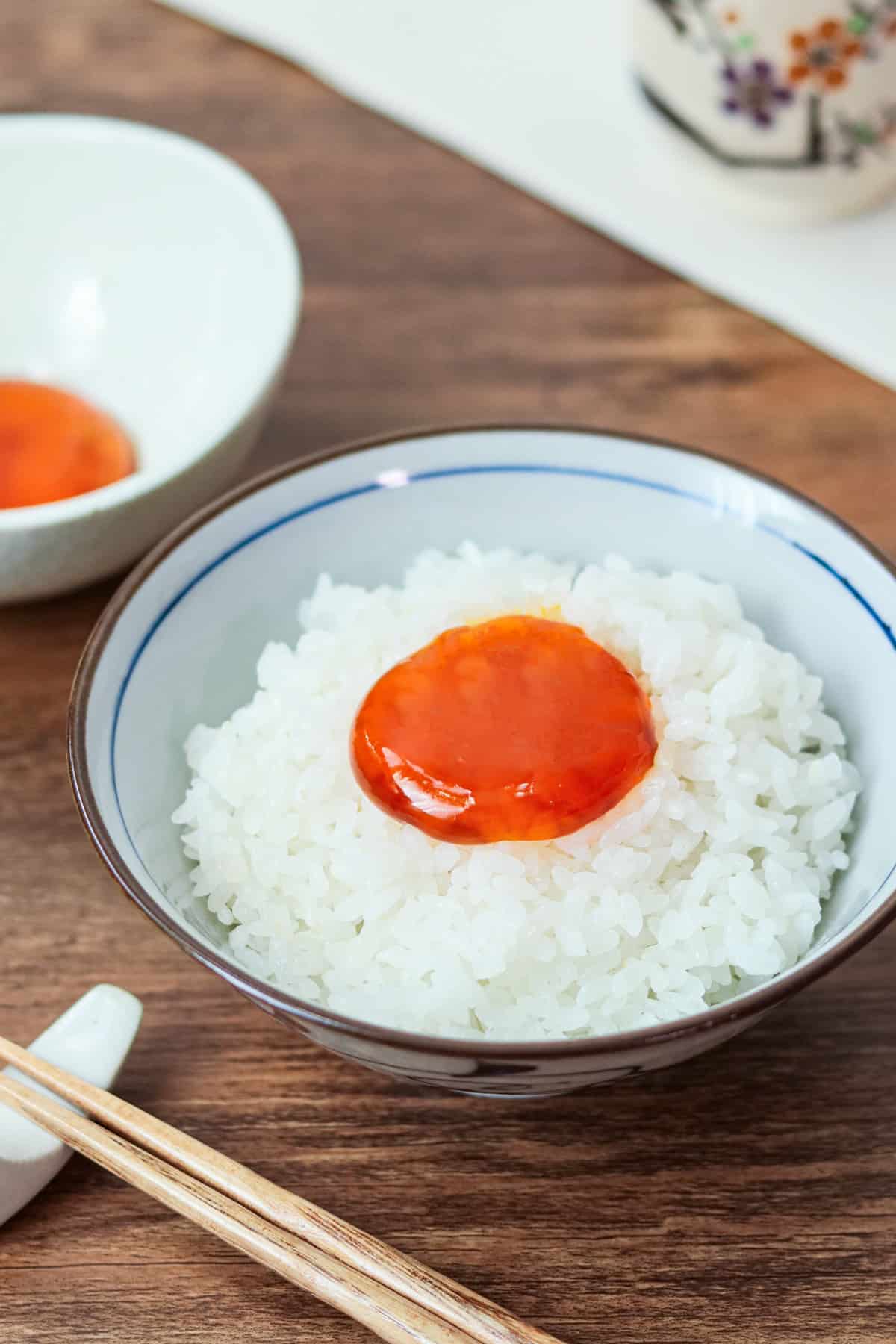
Jump to:
What are Soy Cured Egg Yolks?
Soy Cured Egg Yolks are a Japanese rice condiment, as the name suggests, prepared by curing egg yolks in soy sauce. In Japan, since soy sauce alone can make them overly salty, mirin is commonly added to achieve a mellower flavor. The flavor and texture can vary depending on how long they are cured in the seasoning liquid.
There is an important point to keep in mind when making this delicacy: since it doesn't involve a heating process, there is a risk of food poisoning if the eggs are contaminated with salmonella. To stay safe, be sure to use pasteurized eggs so you can enjoy the rich, creamy flavor with peace of mind.
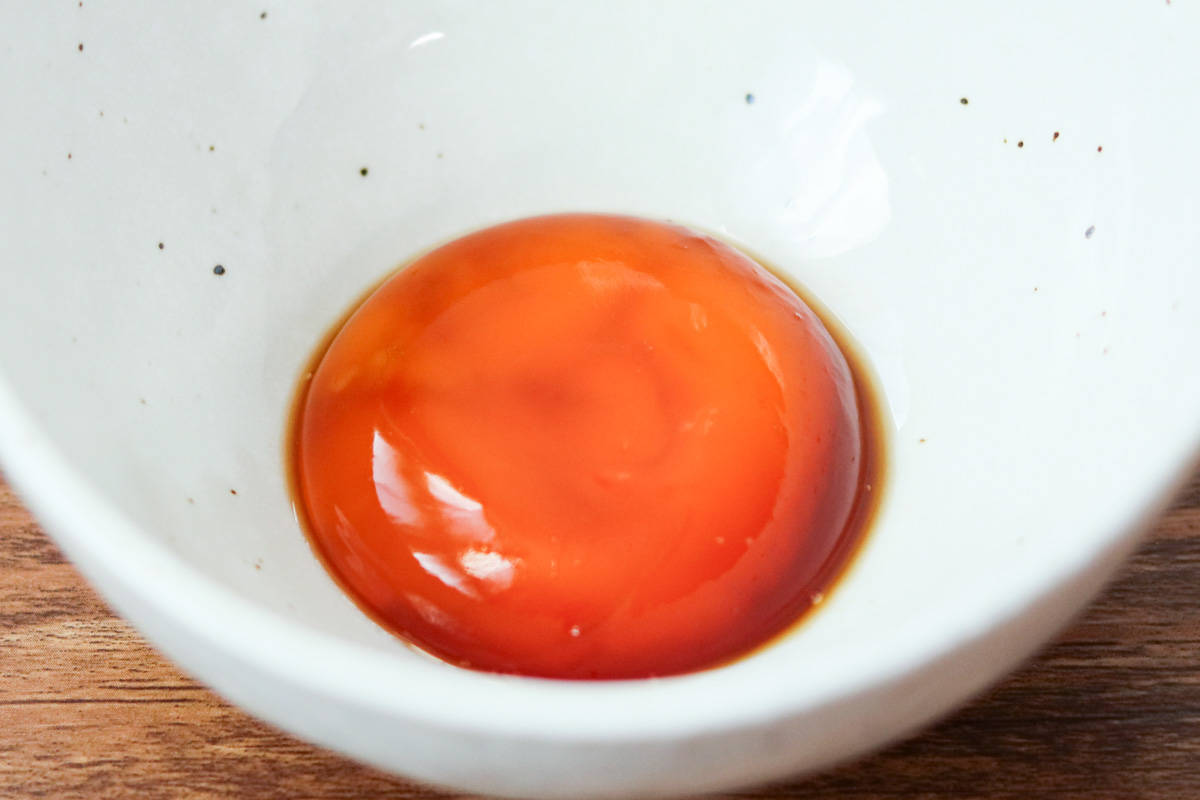
Changes based on curing time
The changes in the condition of the egg yolks depending on the curing time are as follows:
- 4 hours: The yolk remains slightly raw inside.
- 6-12 hours: The seasoning liquid permeates the yolk nicely, making it well-suited for eating with rice. The longer the curing time, the more seasoning the yolk absorbs, resulting in a creamier texture.
- 24 hours: The seasoning liquid permeates the yolk too much, giving it an overly salty taste. This makes it better suited for use as a filling for onigiri (rice balls).
I recommend starting with a curing time of 8-10 hours. After that, feel free to adjust the timing to suit your preferences and intended use.
Raw vs. thawed eggs
When preparing soy cured egg yolks, it is also recommended to use thawed, previously frozen eggs in addition to raw ones. While the flavor is the same in both cases, there is a significant difference in texture. Raw eggs result in a creamier texture, whereas thawed ones provide a bouncier texture that holds its round shape.
If you plan to serve this delicacy over rice, I recommend using raw eggs. However, if you plan to use it as a filling for onigiri, I highly recommend using thawed eggs. Due to their resistance to breaking apart, the egg yolks are less likely to leak out of the onigiri, helping to preserve the texture as a filling.
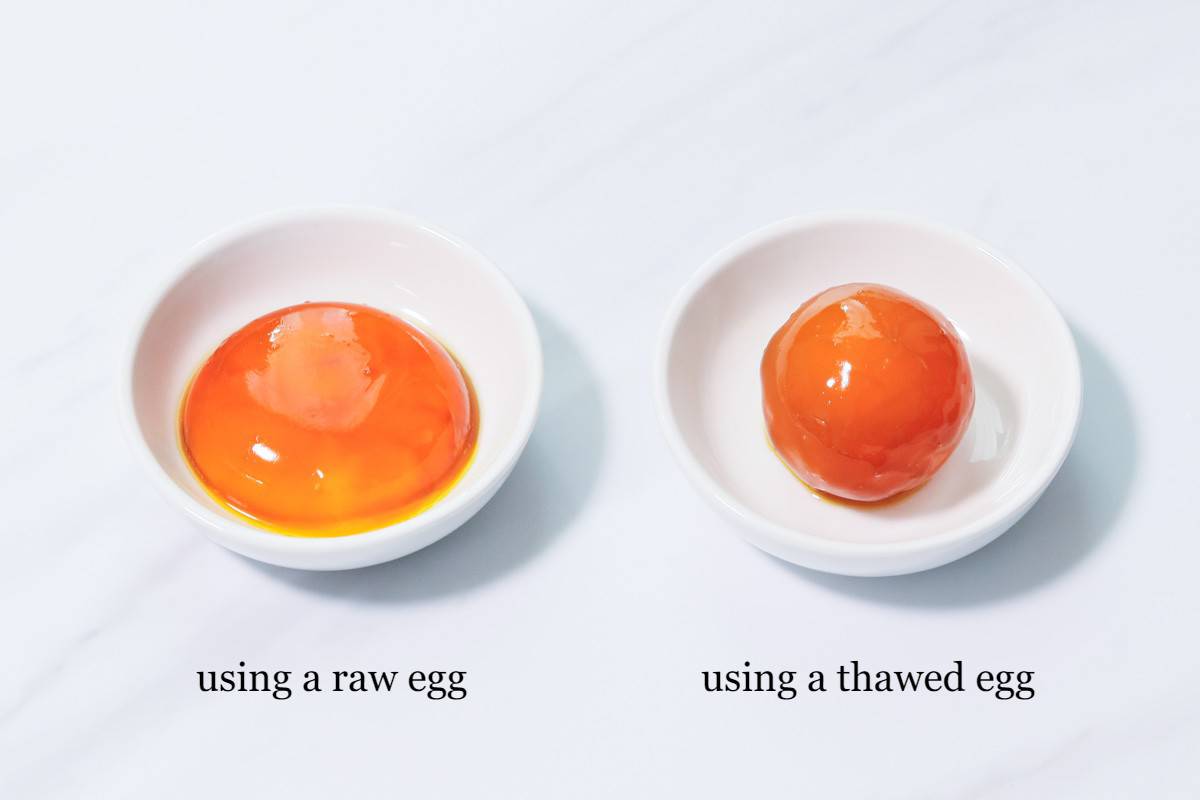
Flavor variations
At first, I recommend enjoying this delicacy exactly as the recipe suggests. However, if you want to change the flavor, you can add sliced garlic or ginger to the marinade.
Garlic will bring a bold, distinctive flavor, while ginger will contribute a refreshing taste. Both variations are delicious, so feel free to experiment to suit your taste.
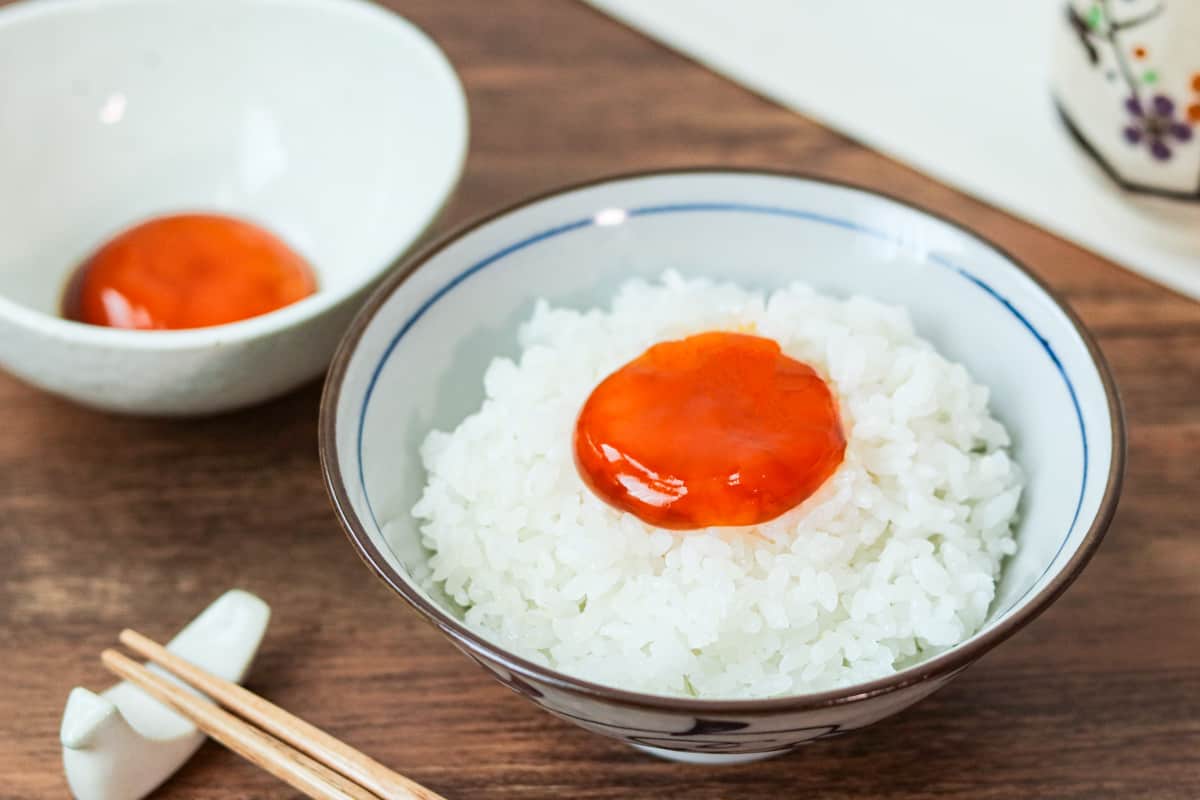
📋Step-by-step recipe
Ingredients
- 2 pasteurized eggs
- 1 Tbsp mirin
- 1 Tbsp soy sauce
Instructions
🕒 Total: 8 hrs 5 mins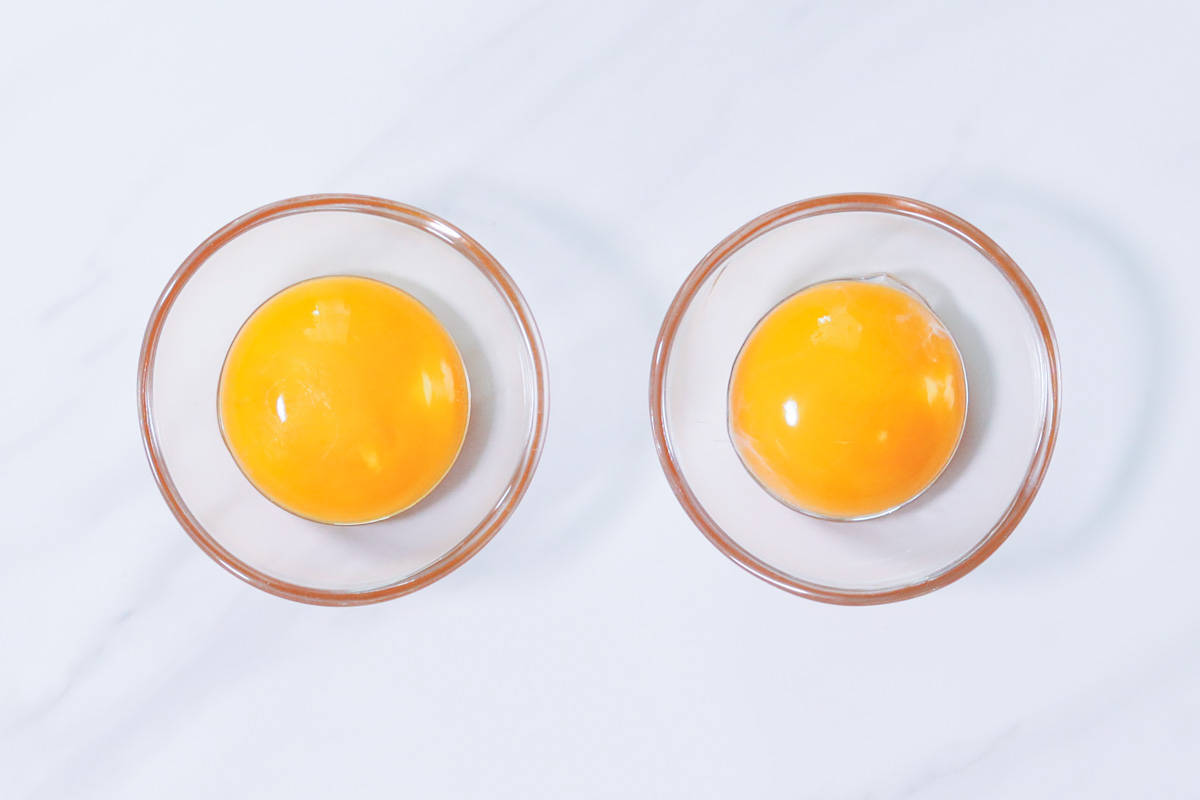
Step 1
Crack the eggs and remove the whites and chalazae, leaving only the yolks intact.
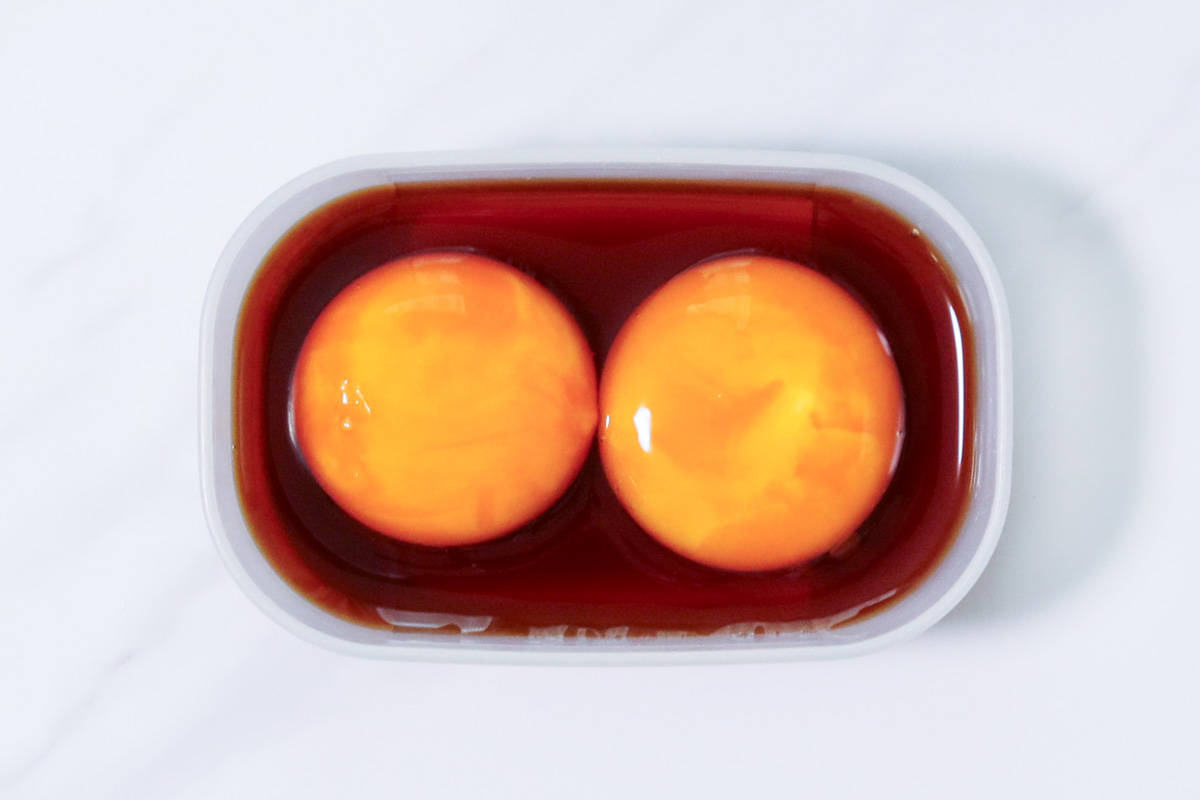
Step 2
Carefully place the yolks in a small container or plastic bag, then add mirin and soy sauce. Let them marinate in the refrigerator for about 8-10 hours.
Note: The flavor and texture will vary depending on how long they are cured in the seasoning liquid. For more details on these variations, please refer to the "Changes Based on Curing Time" section.
To store
You can store it in the refrigerator for up to 2 days.
Preparation tips
- Even when marinated in the seasoning liquid, the egg yolks don't sink, which prevents the tops from being fully cured. If you want them to be fully immersed, flip the yolks halfway through the process to ensure even absorption.
- When using thawed eggs, you can keep the yolks nicely rounded. For more information, please refer to the "Raw vs. Thawed Eggs" section. In this case, add the following step 0 before step 1:
Step 0
Wash the eggs and pat them dry to remove any excess moisture. Place them in a bowl and freeze them for at least half a day. Afterward, allow the frozen eggs to thaw naturally at room temperature or in the refrigerator.
The yolks can be used in step 2 even if they are not fully thawed. The reason for washing the eggs is to remove any bacteria that might be on the shells, as they could crack during the freezing process. Placing them in a bowl prevents the egg whites from sticking to the freezer in case the shells crack.
If you try this recipe, I’d love to hear what you think. Please consider leaving a review and star rating in the comments below. If you enjoyed it, I’d really appreciate it if you shared it with your friends.
More egg recipes you'll probably love
Recipe card
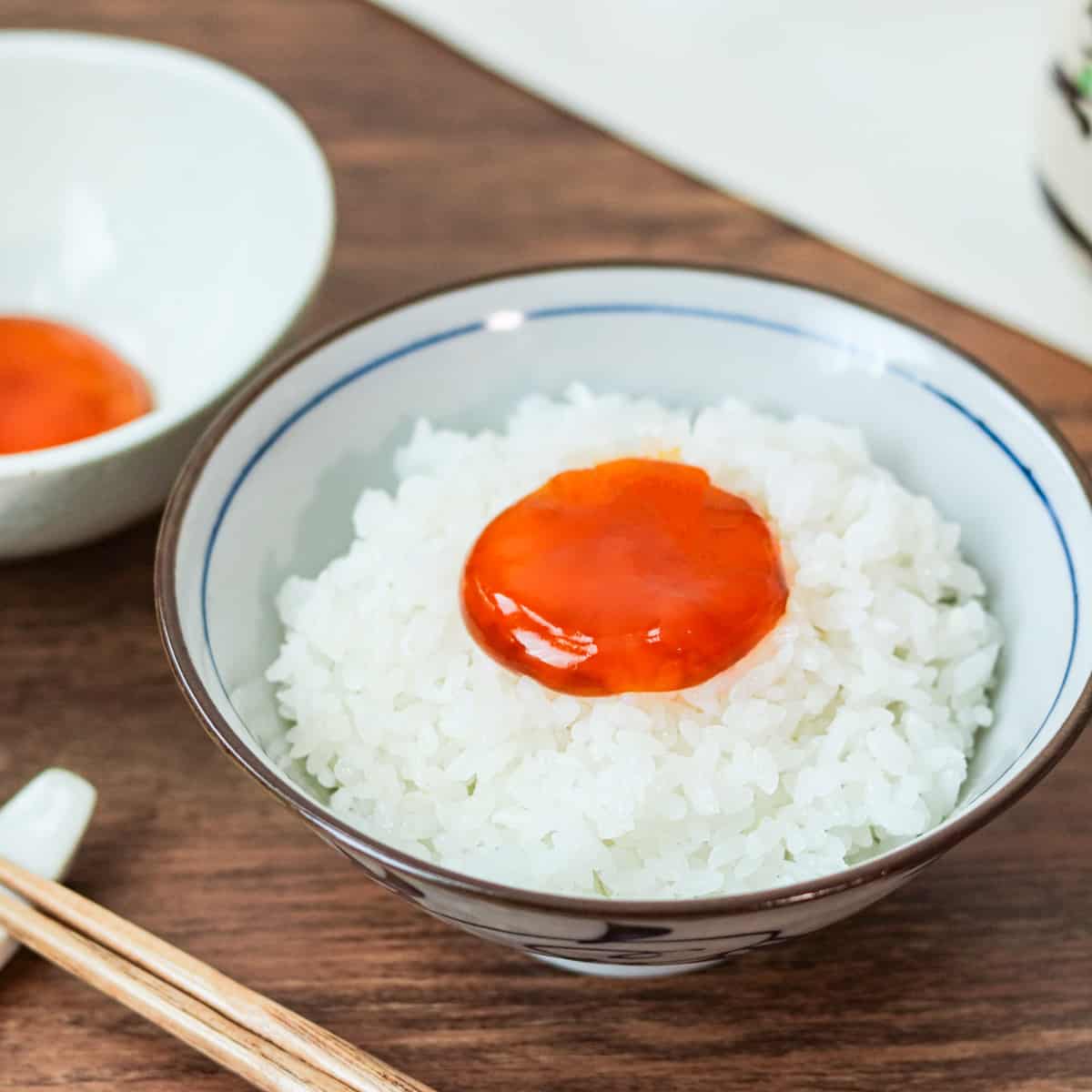
Soy Cured Egg Yolks
Ingredients
- 2 pasteurized eggs
- 1 Tbsp mirin
- 1 Tbsp soy sauce
Instructions
- Crack the eggs and remove the whites and chalazae, leaving only the yolks intact.
- Carefully place the yolks in a small container or plastic bag, then add mirin and soy sauce. Let them marinate in the refrigerator for about 8-10 hours.Note: The flavor and texture will vary depending on how long they are cured in the seasoning liquid. For more details on these variations, please refer to the "Changes Based on Curing Time" section.
Notes
- You can store it in the refrigerator for up to 2 days.
- When using thawed eggs, you can keep the yolks nicely rounded. For more information, please refer to the "Raw vs. Thawed Eggs" section. In this case, add the following step 0 before step 1:
- Step 0: Wash the eggs and pat them dry to remove any excess moisture. Place them in a bowl and freeze them for at least half a day. Afterward, allow the frozen eggs to thaw naturally at room temperature or in the refrigerator.

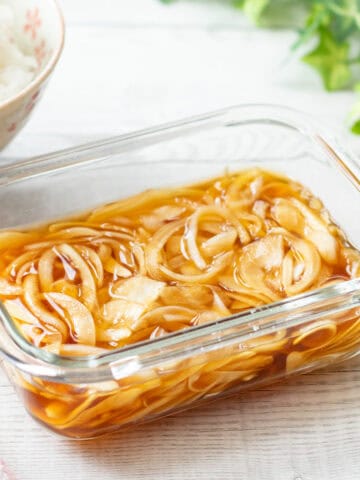
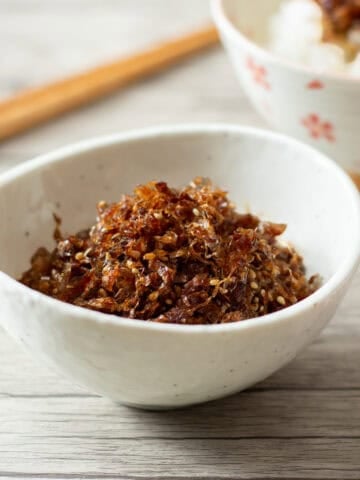
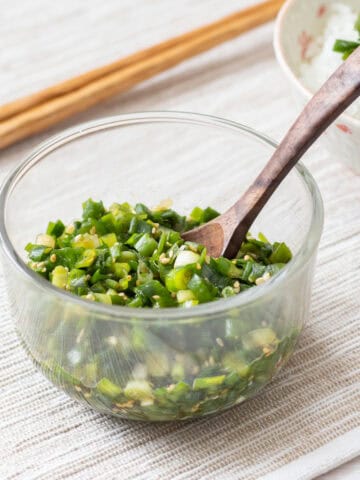
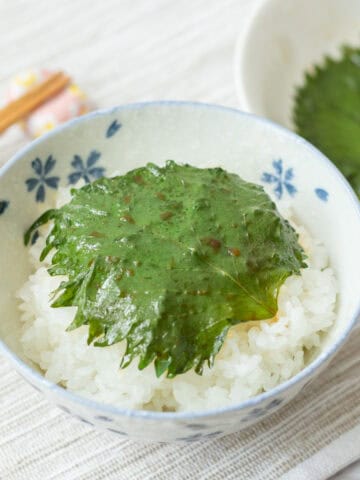
Leave a Rating and a Comment